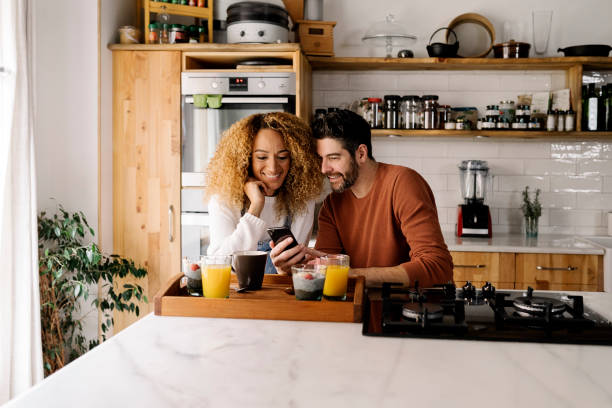
It can be tough out there in the world of dating and relationships. We all know that, like all interpersonal relationships, being half of a couple takes work. This can sometimes feel overwhelming when we consider the amount of emotional effort it takes to date someone, let alone commit to that person. For those among us who are still seeking someone to invest in, dating and getting to know new people can be an exhausting parade of having boundaries pushed or ignored or reiterating the justification we have for our “trust issues.” For those among us who have committed to a partner, the work doesn’t stop: miscommunication, resentment, and frustration can begin to build if we feel insecure, rejected, and/or ignored. The majority of these relationship problems can stem from our attachment style and how it relates (or doesn’t) to the other person’s attachment style.
Do you have a hard time trusting others? Difficulty trusting others can impact every area of our lives and is reserved for our romantic relationships. We can find ourselves experiencing a lot of pain in friendships, work relationships, even our family dynamics if we have a hard time trusting others. The goal is to develop a relatively stable level of innate trust, which we then either build or revoke through the information we gather throughout our interpersonal relationship with each person. Allowing ourselves that level of trust can be a challenge in general, but we tend to feel particularly vulnerable in a romantic situation. This is where our earliest concept of attachment and security can make a monumental impact on our current situation. The stakes can feel higher, and therefore the pressure can be greater in a couples’ relationship as opposed to one with family or friends. Are you having a hard time dating? Do you see patterns in your relationships but aren’t sure how to break them? Your attachment style may be contributing to your relationship issues.
Attachment styles (or patterns) are defined as “the style with which we relate to and bond with others.” It stems from attachment theory, developed in the 1900s by British psychologist John Bowlby, who studied (among other things) how infants and children bonded with and attached to their caregivers. While attachment styles in adulthood don’t necessarily match the styles displayed in childhood, early relationships have an impact on lifetime relationships. Understanding your style and how it can impact your behavior, communication, and instincts can help your interpersonal relationships.
Of course, you are one of two people in any given relationship. It is not your responsibility or your place to change the other person, but you can reassure yourself in the knowledge that you are doing all that you can do to bring your best, most aware self to the situation. An understanding of adult attachment can help us find and sustain love, as discussed in ‘Attached’ by Dr. Amir Levine and Rachel Heller. From this mindset, analysis can begin: “How is my attachment style hurting my relationships? How is my attachment style hurting my dating life? How is my attachment style getting in my way of finding love?” Ideally, once the work has been put in, the answer would be: “It isn’t.”
What are attachment styles?

Attachment styles are formed based on the care we receive from the moment we are born. Infants go through four phases of attachment before they reach ten months old, at which time they begin to show growing bonds with caregivers other than their primary provider. How much time children have with caregivers and the quality of their care can influence how and when attachments develop.
1. Anxious attachment (sometimes referred to as ambivalent attachment):
If you were raised by a parent who was not consistently available to you, there is a very good chance that you have an anxious attachment style. This attachment would have formed as you found that sometimes your needs were met, and sometimes they weren’t. When a caregiver was available to you and decided to attempt to meet your need, the method with which it was met may have also been inconsistent. You would have learned that you could not depend on your primary caregiver. If you feel a sense of shame or embarrassment regarding your emotional needs (perhaps you’ve been told you’re “needy” or “clingy”) and crave love and affection but fear rejection, you may experience anxious attachment.
2. Avoidant attachment:
Avoidant attachment can develop in situations of abuse and neglect, including children who are punished for seeking help from a caregiver. This results in them avoiding seeking help from their caregiver in the future. Those with an avoidant attachment style show no preference between caregivers and complete strangers and tend to avoid their caregivers entirely. Experience difficulty enjoying intimacy and closeness in a romantic relationship, perhaps even to the point that you feel burdened by and uncomfortable with it. Your attachment style might be avoidant.
3. Disorganized attachment:
Suppose a child avoids or resists his/her/their caregiver. In that case, it may indicate disorganized attachment, in which children may seem confused or dazed in interactions with caregivers, or display behavior that indicates more than one attachment pattern. This lack of clear attachment is likely linked to a lack of clear or consistent care, and the child may regard caregivers as both a source of comfort and fear. If emotional relationships cause you to swing between feelings of joy and fear, or feelings of love and hate for the other person, this can indicate disorganized attachment.
4. Secure attachment:

Secure attachment is displayed in children who can rely on their caregivers. They will miss their caregivers in their absence but are not worried about if the caregiver will return. When they are frightened, these children feel safe and confident, seeking comfort from a caregiver. While a secure attachment in childhood does not guarantee a lifetime default of secure attachments, it is a strong start! Children with secure attachments tend to develop strong self-esteem and higher self-reliance as they grow older, allowing them to easily perform well in school and form social relationships. This experience provides a strong foundation for having the ability to securely attach to romantic partners in the future. Suppose you are able to set boundaries, enjoy your independence, are happy to provide mutual support to a partner, and enjoy the company of others but do not distress in their absence. In that case, you are most likely in the secure attachment.
Attachment styles are important because they shape the way we relate to others. They shape how we communicate with others in terms of asking for what we need and asserting that need, setting boundaries, saying no, asking for help, etc. Attachment styles dictate how we show up in relationships in terms of our willingness and openness to be vulnerable and authentic. Depending on our attachment style, we may be a people pleaser or be very guarded and unapproachable. Our attachment style can influence the way we parent and the way we make friends. It can even show up how we make decisions about our finances, career goals, and retirement. An understanding of these styles not only provides insight into ourselves but into others. Just because we experience a secure attachment type doesn’t mean that the person we love does.
The fact is, we all have all four of these styles of attachment. The task is to find out where we spend most of our time. The goal is to be in a secure attachment most of the time, which is work that can be done and sees great success here at our practice in Woodland Hills, CA. Attachment styles are not permanent. They are not stable over one’s life span; they can be challenged and changed. The first step is to realize, “I have attachment issues.” Then the work can begin. We may experience some hesitation about unpacking our issues, perhaps wondering if we are strong enough to take the steps necessary to see real change.
When we step back and realize how important it is to us to form secure, healthy attachments, we will be able to see the benefit of at least trying to deal with our attachment issues. We will remember the sacrifices we have had to make because our attachment style was not supporting our relationships the way we would have liked. When we have reminded ourselves of our issues, we can then ask ourselves, “How do I get over them?”
Tools to understand and work with your attachment style
1. Identify:
What is your current problematic attachment style? Hallmarks of an anxious attachment include a tendency for romantic relationships to take over your life, and thoughts of that person to consume you; a constant need for reassurance; fear and jealousy when separated from your partner; difficulty fully trusting your partner. Avoidant attachment manifests as distance; you may find yourself repelled by a partner’s growing investment in you; partners may accuse you of being closed off or secretive; you may participate in brief, casual relationships or adultery, rather than committing and remaining loyal to one person. Disorganized attachment style may be shaped by childhood abuse, neglect, or trauma. You may crave a meaningful relationship but feel unworthy; you may exhibit antisocial behaviors which tax your relationships, like substance abuse or aggression or violence; you may find emotional relationships unsettling and very confusing. Identify the impact of this unhealthy attachment style on your relationships, goals, and overall mental and emotional health.
Even if you spend the majority of your time in the secure attachment, you may want to identify that style, the hallmarks of it, and the ways in which you can support and maintain it. Secure attachment manifests as the maintenance of emotional balance, appreciation of self but enjoyment of emotional intimacy, and resilience when experiencing setbacks. These are all components and foundations of stable mental wellness and health!
2. Be compassionate:

We all want to be healthy, which in terms of attachment styles means we all want to have a secure attachment. But if you are a human (and I know you can’t deny that you are), you are imperfect and ultimately had or currently have parts of your life where your attachment style is unhealthy. Don’t judge yourself for it. Converse with yourself about where a certain style probably originated, and take stock of the progress you have made since that time. Think of a person you may love now or have loved in the past who also had this style; perhaps things were difficult sometimes, but you probably didn’t love the person any less because of it. The same goes for yourself – you are no less lovable simply because you experience a challenging attachment style. This is true whether you spend the minority of your time in that style or the majority.
Remind yourself that your willingness to work on improving the way you relate to and interact with others is strong and brave. We don’t need to be ecstatic about every piece of ourselves and every part of our history; we come to terms with all aspects of ourselves through self-care. We nourish and support the features of us that struggle until we find peace, and we celebrate and take pride in our strengths to feel confidence and joy.
3. Seek help:
However severe and/or persistent your unhealthy attachment is, there are underlying issues that led to them. Work through the past experiences utilizing any and all resources you have at hand, including therapy. In therapy, you will be given tools to use on your own time and feedback about how your introspective work is going at your next session. You may wish to include your loved ones in your journey, recruiting them to support you through behavior adjustments, breaking and/or creating new habits, and simple positive reinforcement. There may not be any loved ones in your circle with whom you trust your ongoing process, and that’s okay, too! Your therapist will be able to guide and support you as you nurture your relationship with yourself. When that has strengthened, so will your relationships with others.
Bringing your most enlightened self to your relationship not only gives you the best shot at making it work but also provides peace of mind if it doesn’t. Many people will reflect on a past love and lament, “If I had only known x…” or “If I’d figured out y…”. When you have done the work to clear the path for love, then you can rest assured in the knowledge that if something didn’t work out, it wasn’t meant to. You cannot control the other person; you can only seek to better yourself. The willingness and ability to keep showing up for love as your authentic self is the most critical factor when it comes to finding a healthy, happy relationship.
Embracing You Therapy Group Practice
Here at Embracing You Therapy, we invite you to explore with us how life would be different if you had more control over your thoughts and emotions, and we invite you to consider that it is possible to accept things just as they are, embracing imperfections to create a gentler place for calm in your life.
Let’s learn what drives your unique perspective on anxiety and stress. Then, let’s find the tools-your unique tools-that help you respond to life in a healthy, calm way. Contact us today for your complimentary 15-minute phone consultation with one of our Client Care Coordinators.





